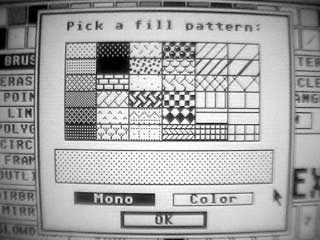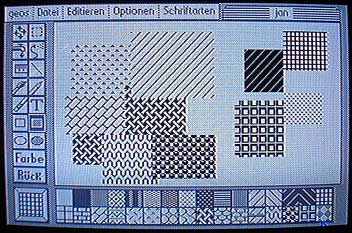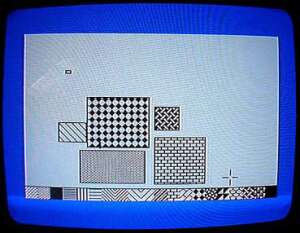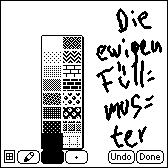
The Eternal Fill Patterns are 16×16 pixel monochrome images. Tiled together they can fill up any space. In times when computers could display no or very few colors or greyscales, the Eternal Fill Patterns were used as a substitute. They survived up to the present day in the most new graphic packages and will never disappear. Because there are always new small and cheap devices with monochrome displays. Palm Pilot, the watch running Linux, the Dreamcast VMU; they all need the Eternal Fill Patterns.

These fill patterns appeared first in 1984 on the Macintosh in the software MacPaint. 1.5 years later, GEM, a rip-off of the Apple GUI, was released on PC and ATARI ST. It brought the Eternal Fill Patterns into programs like GEM-Paint, Degas and STarDraw.

8 bit systems like the C64 and the Schneider CPC were forced to develop in a similar direction and soon there was an operating system called GEOS for the C64 that allowed to use the Eternal Fill Patterns as well.


Pagefox is a Desktop Publishing software on a video game-like cartridge. And Geos has, like you maybe expected, still a userbase. Read the history of GEOS, see some cute screenshots (german site).

The only good thing about macromedia is that they conserved the Eternal Fill Patterns until today in the ultra-useless paint part of their messy software Director.

PDAs like the Palm Pilot brought the Eternal Fill Patterns back into the minds of everybody. The simple paint programs that are available for the Palm sometimes feature all of them!
The only platform that has been save from the Eternal Fill Patterns since 1984 is, as far as I know, the Commodore Amiga.